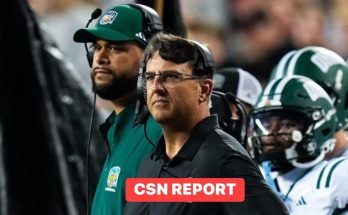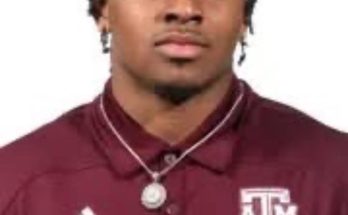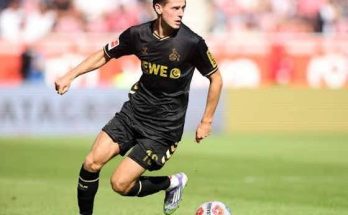When the 2025 NBA free agency period opened, the Los Angeles Lakers made one thing abundantly clear behind the scenes—they were not operating from a place of confusion or indecision. From the earliest conversations in the front office to the eventual initial outreach to player agents and opposing teams, the name that kept surfacing, the name written at the very top of their offseason whiteboard, was that of Deandre Ayton. The message from general manager Rob Pelinka and newly entrenched head coach J.J. Redick was consistent and focused: Ayton wasn’t just an option, he was the option. Their ideal puzzle piece to pair with LeBron James, Anthony Davis, and a revamped rotation for another championship push. Despite whispers about other centers being evaluated—names like Jonas Valančiūnas, Isaiah Hartenstein, and even Brook Lopez—the Lakers never truly wavered in their internal commitment. Ayton was the prize, and the Lakers had their eyes on him from the jump.
Ayton’s availability had been a subject of growing speculation since the end of the 2023–2024 season, when his relationship with the Portland Trail Blazers began to show signs of wear. While Portland had initially positioned him as a cornerstone post-Damian Lillard, the emergence of young big man Duop Reath and the continued development of Scoot Henderson reshaped their priorities. For Los Angeles, this shift created a golden opportunity. They recognized that while Ayton’s time in Phoenix ended on an underwhelming note and his season in Portland didn’t produce All-Star numbers, his skill set—when unleashed in the right system—still had tremendous upside. And the Lakers believed they had the right locker room, the right veterans, and the right culture to help him flourish. Quietly, they began aligning everything to put themselves in position to pounce when the moment came.
Much of the strategic thinking inside the Lakers’ war room centered around optimizing Anthony Davis. Despite Davis’ All-NBA performances in recent years, there remained a pressing need to preserve his body by reducing the number of minutes he logged at center. The organization had tried patchwork solutions over the past two seasons, cycling through players like Mo Bamba, Jaxson Hayes, and Christian Wood. But the results were uneven, and the playoff matchups against physical teams like Denver and Memphis exposed how much the Lakers missed a true center who could battle on the block, rebound consistently, and occasionally take pressure off Davis on both ends. Ayton’s youth, athleticism, and ability to play above the rim gave the Lakers a different dimension they sorely lacked. More than just a rotational fit, he represented a strategic recalibration. A 7-footer who could play 30–35 minutes a night, defend the rim, and space the floor with mid-range touch while allowing Davis to roam more freely as a help defender.
The fit wasn’t just about basketball mechanics—it was also about the psychology of the locker room. Ayton’s previous stops, especially in Phoenix, were riddled with questions about engagement and effort. But Los Angeles saw those concerns as the result of a mismanaged developmental arc, not a reflection of Ayton’s ceiling. They envisioned a reset for him, one where playing alongside professionals like LeBron and Davis—two stars who command accountability—would elevate Ayton’s day-to-day standards. LeBron’s mentoring, Redick’s communication-focused leadership, and the Lakers’ high-pressure, championship-or-bust atmosphere were seen not as risks for Ayton, but as precisely what he needed. Sources close to the team described this angle as one of the most important internal selling points: that Ayton wouldn’t just be joining a team, he’d be stepping into a program that could redefine his career.
Financially, the Lakers were not the most obvious destination. With cap space tied up in stars and key role players like Austin Reaves and Rui Hachimura, making a direct play for Ayton meant navigating complex salary maneuvering. Yet that didn’t deter them. Even as other teams made more obvious cap-room moves, Pelinka quietly worked with agents and rival executives to float packages that could get the job done. The Lakers remained patient, letting Portland test the market, and when other suitors began hesitating or backing off due to Ayton’s hefty contract, Los Angeles struck. It wasn’t flashy. It didn’t involve three teams or headline-grabbing assets. But it was effective. The Lakers parted with a mix of future picks, young talent, and expiring deals to finally bring Ayton to L.A.—a move months in the making, and years in the conceptualization.
Internally, there was celebration, not just because they landed a big name, but because it reflected execution. They had their board. They had their man. And they got him. Coaches reportedly already have a role carved out for Ayton that includes high-usage stretches with the second unit and starting alongside Davis in bigger lineups. This was not a signing done out of desperation or luxury. This was the central move. The chess piece the Lakers had placed all their offseason calculations around. While the fanbase had speculated about flashier names or returning free agents, the Lakers’ power players stayed grounded, zeroed in on what they saw as the most impactful, achievable upgrade to the roster’s core.



